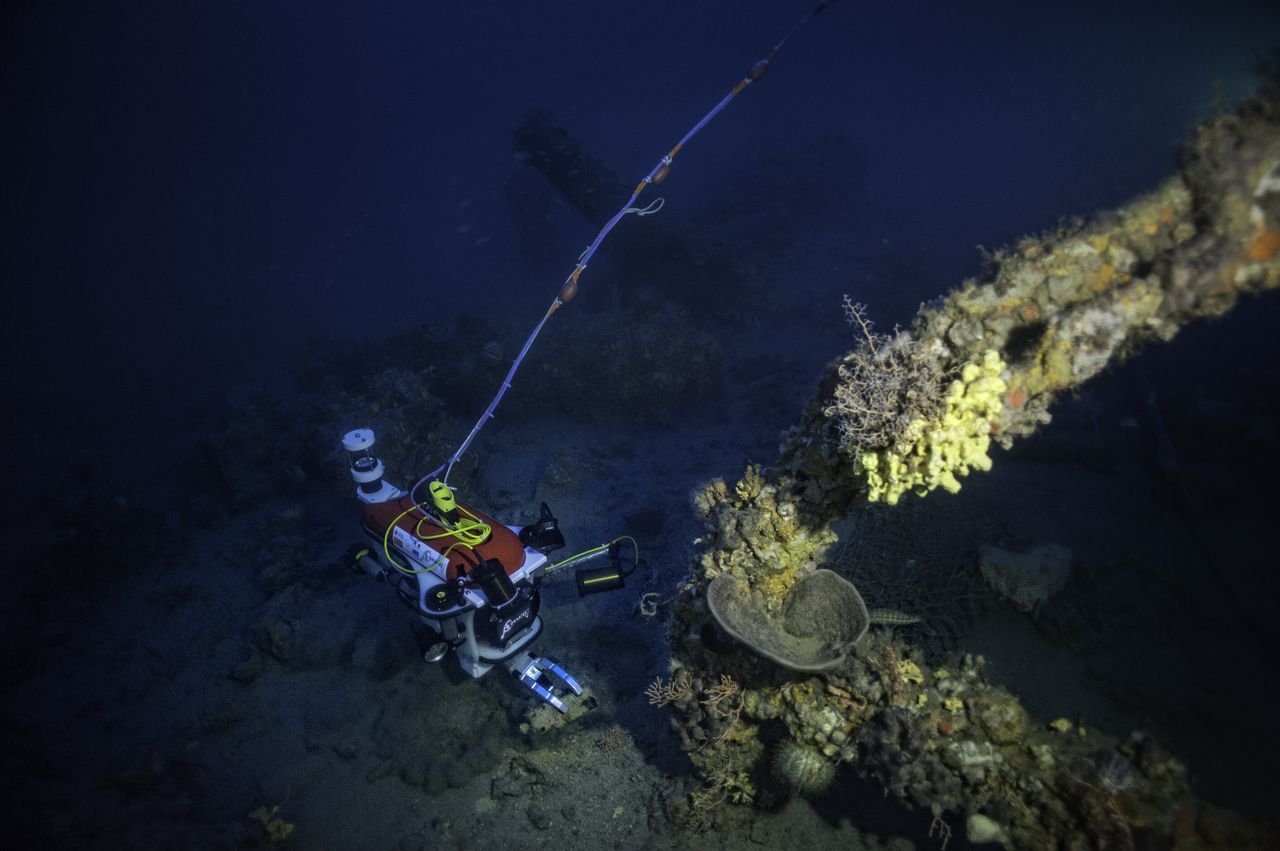When marine biology joins forces with robots
To study the marine fauna of the Indian Ocean, the BUBOT project puts Big Data to work in the field of biology. At stake is the robotization of underwater observations, followed by the development of the algorithms needed to study the thousands of hours of video footage collected. This project is supported by the I-SITE MUSE as part of its 2018 research support program.

Why use robots when diving is the best way to discover underwater life? For marine biologists, robotization holds the promise of unprecedented observations, as it enables them to explore marine habitats for hours on end at depths of up to twenty meters. Through new observation tools, the BUBOT project (Better Understanding Biodiversity changes thanks to new Observation Tools) opens a new window on marine biodiversity in the Indian Ocean.
Low-cost robot
The first step is to create a robot that will automate observations at depths of ten to one hundred meters, enabling us to study the biodiversity of coral reefs along this vertical gradient. "The biologists gave us precise specifications for the creation of an ad hoc robot", explains Karen Godary-Déjean, from the LIRMM (Montpellier Laboratory of Computer Science, Robotics and Microelectronics). In concrete terms, the robot must be capable of carrying out a transect autonomously, avoiding turtles, nets and other drifting objects. Equipped with sensors, the device will have to avoid obstacles, slow down and turn around. Another constraint is price: while underwater technology exists, the state-of-the-art versions available are prohibitively expensive, costing hundreds of thousands of euros.
"Video surveillance of the sea
Robots are not the ultimate solution. Bottom-mounted cameras are a complementary tool for long-term observation of the seabed. "A real video surveillance of the sea", says Camille Magneville, doctoral student at the Marbec (Marine Biodiversity, Exploitation and Conservation) laboratory, as she describes the system she installed in Mayotte on two sites, one in a protected area and the other in a fished area. Using twelve cameras, she collected almost 500 hours of video in four days, which will enable her to better measure the diversity and ecological roles of fish in each site.
However, Big Data is only of interest to research if it is capable of exploiting the masses of data produced by automated systems. BUBOT thus includes a component on artificial intelligence: teaching machines to recognize fish species in order to automatically analyze all images recorded by cameras, whether robot-mounted or fixed. "Thanks to all the videos collected in Mayotte, we hope to be able to recognize over 100 species within 2 years (which should represent more than 95% of the individuals visible on the videos)," explains Sébastien Villéger, a functional ecology researcher at MARBEC. To train the "Deep Learning" algorithms, the project benefits from the help of students, mainly from the University of Montpellier, who apply their taxonomy skills to annotate the fish on the videos. "Our aim is to have a wide variety of postures, conditions (light, apparent color) and backgrounds for each species, so that the algorithm is ultimately effective in all situations", says the researcher.
In addition to species identification, assessing the size of each individual is also crucial to the study of underwater ecosystems. This is not yet possible with the Gopro cameras on board the robot. The next step is to equip the robot with a video system featuring stereo cameras.
Chatty fishermen
Transdisciplinarity is a must, and BUBOT also includes human sciences to understand the environment through the knowledge of the first observers, the fishermen. A geographer and an anthropologist complete the team. In Mayotte, they have conducted almost thirty interviews, and have reported on the scarcity of fish in certain areas, the shift in fishing zones... all useful information for choosing study sites. And artisanal fishermen are talkative. "Interviews last just over three hours on average, and the fishermen don't hesitate to share information about their fishing grounds," says Esmeralda Longépée from UMR Espace-Dev.
With Covid, BUBOT has fallen a little behind schedule. In another unforeseen change to the program, of the three zones initially covered by the project, the fieldwork in Mozambique had to be cancelled, this country having recently been classified as a dangerous zone. It will be replaced by the Comoros. As for the first site, the Iles Éparses, the first underwater trips proved promising, with a rich biodiversity. However, given the complicated diving conditions on a sheer drop-off, the team can't wait to send their robot there.